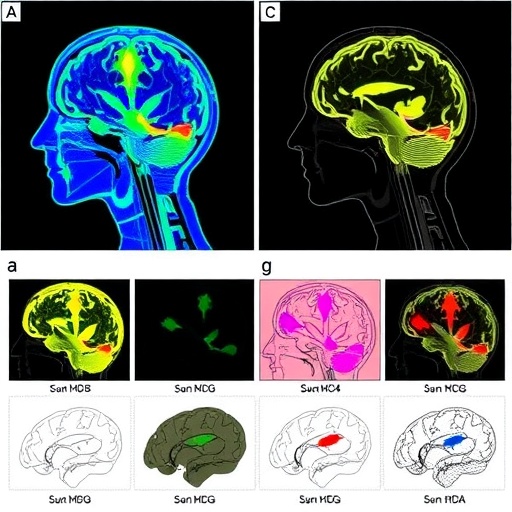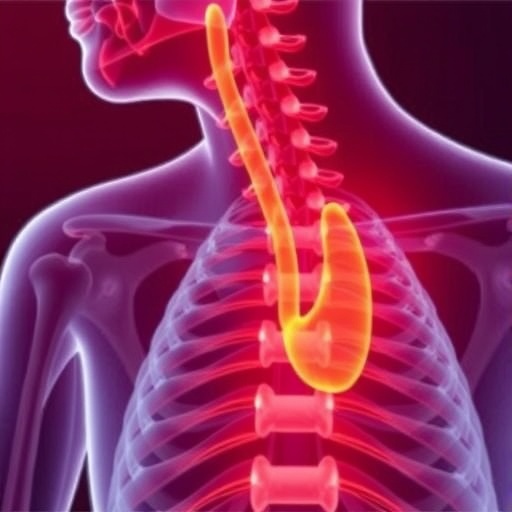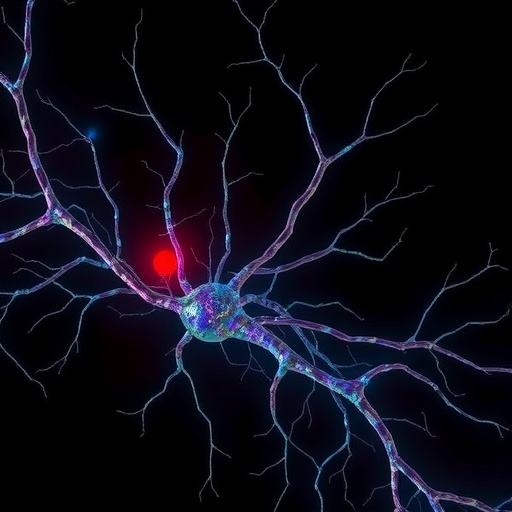In the ever-evolving field of biomedical engineering, researchers are continually seeking innovative ways to understand and manipulate the human body’s electrical signals. One of the most promising areas of study in this domain involves the analysis of surface electromyography (sEMG), a technique that captures electrical activity from muscles through the skin. A recent article by Ning, Han, Liu, and associates delves deep into this complex subject, examining contemporary methods for decomposing sEMG signals, particularly focusing on the KmCKC and SL methodologies. This comprehensive assessment is poised to influence future research and applications in medical and rehabilitation fields.
sEMG is critical in biomechanics and rehabilitation, providing insights into muscle activation patterns during various activities. By decoding these signals, researchers can better understand muscle function, which is paramount for developing effective therapies for patients recovering from surgery or injuries. The innovations in sEMG decomposition are essential for establishing more accurate models of muscle behavior, which ultimately facilitates better diagnosis and treatment planning.
The study meticulously evaluates the performance of two distinct sEMG decomposition approaches: KmCKC and SL. KmCKC, or Kalman-based Method for Common Knowledge Components, employs a sophisticated algorithm that enables the extraction of multiple signal components from the complex sEMG waveforms. On the other hand, the SL, or Spinal-Like Model, offers a different perspective by mimicking neuron-like units that help in interpreting the sEMG signaling. Both methods present unique advantages and challenges that researchers must navigate in their pursuits to achieve optimal results.
One of the standout features of this research is its emphasis on benchmarking. By establishing a set of criteria for assessing the efficiency and effectiveness of both decomposition methods, the researchers provide a much-needed framework for future studies in sEMG analysis. Key parameters such as synchrony, duration, maximum voluntary contraction (MVC), and firing rate are rigorously tested in various experimental setups to draw reliable conclusions about each methodology. Such systematic benchmarking promotes a more transparent understanding of how discrepancies in findings across different studies can arise based on methodological variations.
Synchrony is crucial in evaluating muscle coordination during complex movements, and its assessment sheds light on how well the two decomposition techniques perform in capturing simultaneous muscle firings. Analyzing duration is equally important, as it relates to the temporal aspects of muscle activation and can have significant implications for rehabilitation protocols. Understanding how each method handles MVC allows researchers to appreciate the estimation of muscle strength and can inform tailored training regimens for athletes and patients alike.
In addition to synchrony and duration, the firing rate metric provides insight into the frequency of action potentials generated by muscle fibers during contractions. This information is essential for distinguishing between different levels of muscle activation, thereby allowing for more nuanced interpretations of the sEMG data. The comparative analysis of these parameters highlights the strengths and weaknesses of the KmCKC and SL methods, contributing valuable insights for researchers and clinicians interested in muscular function.
Moreover, the study meticulously documents how the results differ across various conditions, providing a nuanced understanding of how external factors such as task complexity and individual variability can influence sEMG signal decomposition. This level of detail is invaluable for practitioners applying these techniques in real-world scenarios, where patient-specific factors often complicate generalizable conclusions.
Another noteworthy aspect of this research is its potential impact on advancements in rehabilitation technology. With the rise of wearable devices and smart robotics, the ability to accurately interpret sEMG signals can lead to significant improvements in assistive technologies for individuals with mobility challenges. By providing a valid assessment of muscle function, practitioners can customize rehabilitation programs that dynamically adapt to the user’s physical capabilities.
Building upon the findings of this study could lead to novel applications for robotic prosthetics and automated rehabilitation systems. The integration of advanced sEMG decomposition techniques can enhance the sensory feedback mechanisms in prosthetic limbs, allowing for smoother, more intuitive control that closely mimics biological movement. This represents a critical step toward creating adaptive systems that enhance the quality of life for individuals with limb differences.
Furthermore, the authors highlight the necessity for ongoing innovation in sEMG analysis tools, stressing that future research should focus on refining existing methods while also exploring new technologies, such as machine learning algorithms and artificial intelligence, that may elevate the accuracy and efficiency of signal decomposition. Such advancements could accelerate the pace of research and provide healthcare professionals with more powerful tools for assessment and intervention.
Overall, the benchmarking of sEMG decomposition methods presented in this article signifies a pivotal moment for the field of biomechanics and rehabilitation. As researchers strive to unite theory and practice through empirical evidence, the insights gained from this comprehensive assessment will undoubtedly catalyze further exploration into the neurophysiological aspects of muscle function. The degree of detail and critical analysis within the study provides a solid foundation for future inquiries and applications, setting the stage for a new era of advanced biomedical engineering.
Through the collaboration of experts in the field, this research promises to inspire the next generation of scientists and engineers focused on unlocking the potential of bioelectric signals. As intriguing as the complexities of human physiology are, they offer a rich tapestry for exploration; each finding harbors the potential to unravel new dimensions of our understanding of health, movement, and technology.
In conclusion, the article by Ning, Han, Liu, and colleagues serves as a crucial entry point into the world of sEMG decomposition, providing a wealth of information that will push the boundaries of current knowledge and methodologies. The benchmarks established within this study will aid not only in scientific research but also in practical, everyday applications in health and wellness. As we navigate a future that increasingly relies on technological integration with human physiology, studies like this remind us of the intricate connections between mind, body, and machine.
Subject of Research: Surface electromyography (sEMG) decomposition techniques, specifically KmCKC and SL methods.
Article Title: Benchmarking sEMG Decomposition: A Comprehensive Assessment of KmCKC and SL Across Synchrony, Duration, MVC, and Firing Rate.
Article References:
Ning, Y., Han, Z., Liu, M. et al. Benchmarking sEMG Decomposition: A Comprehensive Assessment of KmCKC and SL Across Synchrony, Duration, MVC, and Firing Rate. J. Med. Biol. Eng. (2025). https://doi.org/10.1007/s40846-025-00996-7
Image Credits: AI Generated
DOI: https://doi.org/10.1007/s40846-025-00996-7
Keywords: sEMG, KmCKC, SL, muscle activation, electromyography, biomechanics, rehabilitation, signal decomposition, benchmarking, machine learning.
Tags: accurate modeling of muscle behavioradvanced sEMG signal processingbiomedical engineering innovationscomparative study of sEMG methodselectrical signals from musclesinsights into muscle function and rehabilitationKmCKC methodology in sEMGmuscle activation patterns in rehabilitationsEMG decomposition techniquesSL approach for muscle signal analysissurface electromyography analysistherapies for post-surgery recovery






